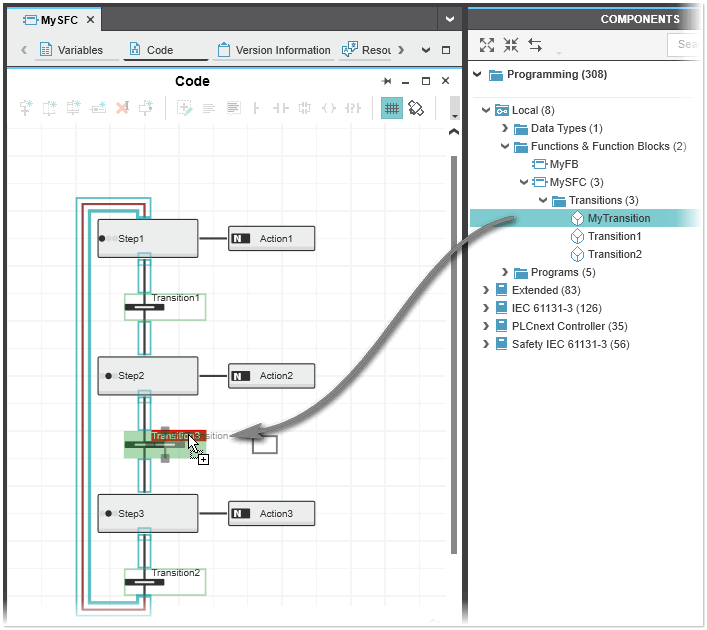Editing Transitions
A transition represents the condition under which the immediately preceding step becomes inactive and the process continues with the immediately succeeding step (succeeding step becomes active).
If a transition is FALSE, the preceding step and the assigned actions are executed continuously. The transition is evaluated again. When the transition becomes TRUE, the preceding step executes the actions defined in this step once again and then the succeeding step becomes active.
A transition can be realized by:
- a single Boolean variable (TRUE/FALSE constants are also allowed).
- a directly connected LD/FBD network with a Boolean result.
- a coded transition written in the programming languages ST, FBD or LD. The coded transition is shown as separate node in the 'Transitions' subfolder of the SFC function block POU folder in the COMPONENTS area.
| Further Info
Refer to the separate topics for details on the various SFC objects  ‣ Step in SFC ‣ Step in SFC
×‣ Transition in SFC ×‣ Action and Action Qualifier in SFC ×‣ Branch in SFC ×. For information how to add a coded transition to an SFC function block POU, refer to the topic "POUs". |
What do you want to do?
 Connect a variable, constant or LD/FBD network to a transition
Connect a variable, constant or LD/FBD network to a transition

